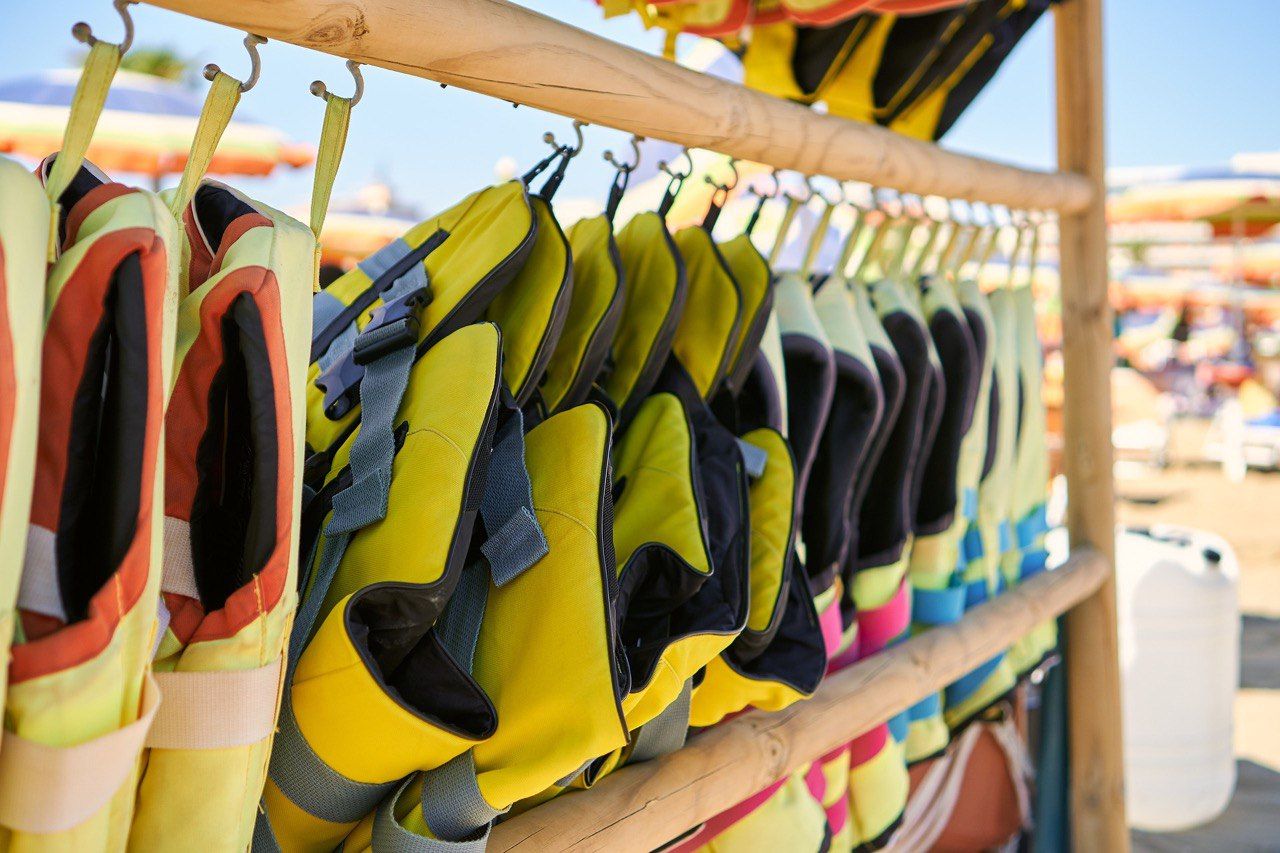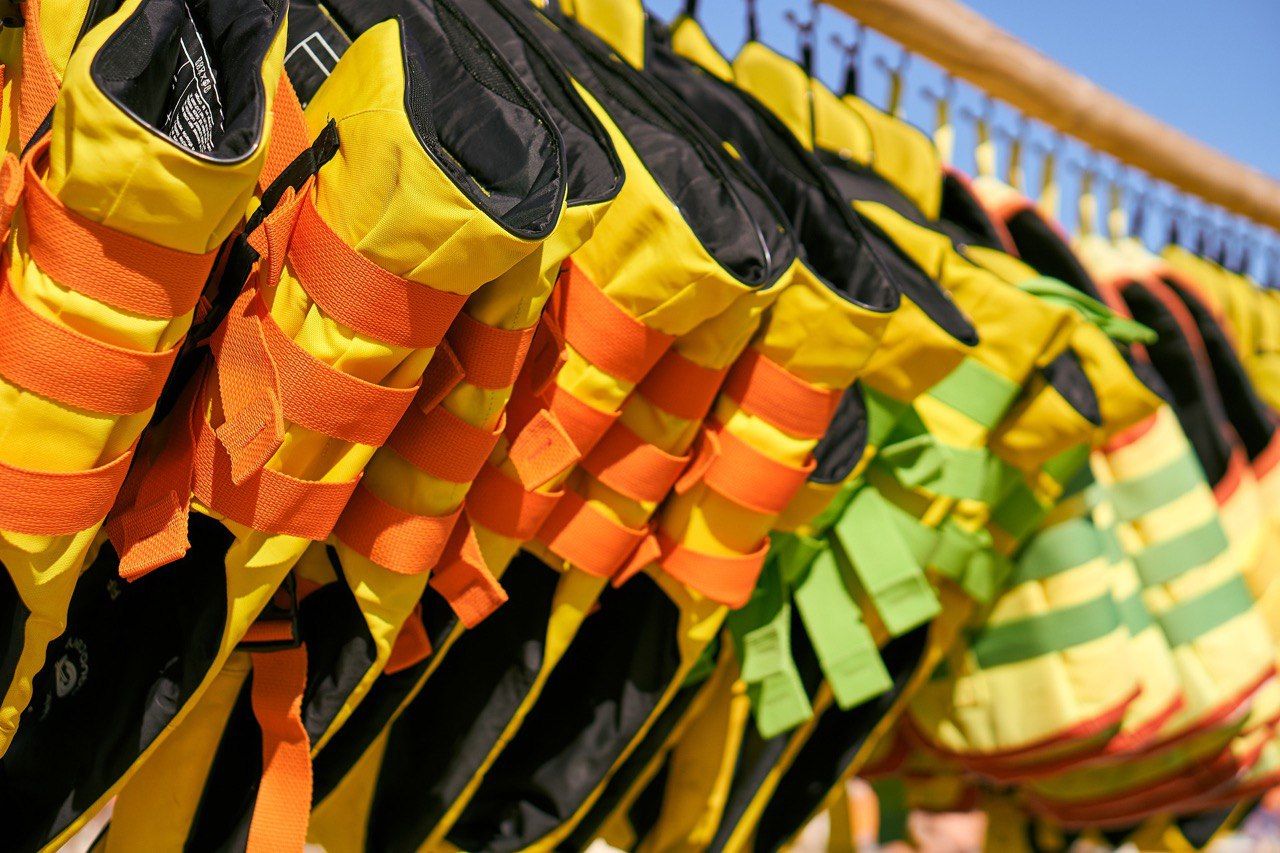Lifejackets, buoyancy aids and floating devices as a subject for international standardization

Issues of protection and protective clothing are relevant in almost every area of human activity. As the number of protective production technologies increases in global markets every day, the norms and rules applied in the production process must be standardized to the same extent. When it comes to the production and use of life jackets, it is necessary to pay attention to the fact that they are used by both children and adults, in turn, for both professional and recreational purposes. However, given the use of life jackets, even for recreational purposes, attention should be paid to safety conditions and their observance. For this purpose the international standards which will guarantee that the made product is completely safe in use are created. If the areas of your activity come into contact with the use of production or sale of life jackets, we recommend that you read the most popular international regulations on the market today.
Personal flotation devices - Part 2: Lifejackets, performance level 275 - Safety requirements (ISO 12402-2:2020)
Personal flotation devices - Part 3: Lifejackets, performance level 150 - Safety requirements (ISO 12402-3:2020)
When standardizing life jackets, it is necessary to clearly distinguish between professional and personal standards. Standards such as EN ISO 12402-2: 2020 and EN ISO 12402-3: 2020 have been developed to regulate the personal use of life jackets.
EN ISO 12402-2:2020 specifies the safety requirements for lifejackets, performance level 275. It is applicable to lifejackets for adults, children or infants, for offshore use under severe conditions, or when protective clothing is being used or additional loads are being carried.
EN ISO 12402-3:2020. specifies the safety requirements for lifejackets, performance level 150. It is applicable to lifejackets used by adults, children and infants, for general, offshore or rough water use, or when the users are fully clothed.
If you are interested in more detailed details, we recommend that you follow the link to our website where you can find all the detailed technical information on this document.
Personal flotation devices - Part 4: Lifejackets, performance level 100 - Safety requirements (ISO 12402-4:2020)
The concept of personal devices is quite global and general. That is why when choosing the right standard it is necessary to pay attention to certain technical parameters. One example is the standard EN ISO 12402-4: 2020.
This document specifies the safety requirements for lifejackets, performance level 100. It is applicable to lifejackets used by adults, children and infants, for use in sheltered or calm water, or when the users are fully clothed.
As the issue of standardization is very important, before purchasing the document you need, we recommend that you consult with a team of professionals.
Personal flotation devices - Part 5: Buoyancy aids (level 50) - Safety requirements (ISO 12402-5:2020)
When selecting personal devices for security devices, there are different levels and parameters of these devices. That is why different standards are created. Another document in the field of regulating the use of safety vests is EN ISO 12402-5: 2020.
This document specifies the safety requirements for buoyancy aids, performance level 50. It is applicable to buoyancy aids for adults and children with a body mass greater than 25 kg only, used in sheltered waters. Buoyancy aids require active participation by the user where help and rescue are close at hand. One-piece and two-piece inherently buoyant floatation suit PFDs are deemed to qualify as special application devices according to ISO 12402-6:2020.
As the characteristics of this document overlap with other standards in case of any questions, we recommend that you clarify in more detail all the features of our team.
Personal flotation devices - Part 6: Special application lifejackets and buoyancy aids - Safety requirements and additional test methods (ISO 12402-6:2020)
Each standard has separate parts which can describe various stages of production, application of protective equipment. Another important standard for life jackets is EN ISO 12402-6: 2020.
This document specifies the safety requirements and additional test methods for special application lifejackets and buoyancy aids (hereafter named PFD) for adults, children or infants. It is intended to be used in conjunction with ISO 12402‑2:2020, ISO 12402‑3:2020, ISO 12402‑4:2020 and ISO 12402‑5:2020, as applicable.
If the number of technical parameters has misled you, you can always ask questions to our specialists, who will be happy to help you choose the document that will increase the productivity of your business.
Personal flotation devices - Part 8: Accessories - Safety requirements and test methods (ISO 12402-8:2020)
Returning to the issue of security, it should be noted that even accessories and devices that are used to prevent and minimize any risks have test methods. They determine the level of further security when using these devices. One of the standards governing this activity is EN ISO 12402-8: 2020.
This document specifies the safety requirements and test methods for accessories used for personal flotation devices (PFDs).
You can find more detailed information on this document by following the link to our site attached above.

Personal flotation devices - Part 9: Evaluation (ISO 12402-9:2020)
Assessing the quality of certain products is an integral part of the process of launching it on the market. One of the standards governing this stage is EN ISO 12402-9: 2020.
This document specifies the processes for evaluation of personal flotation devices for fulfilment of the requirements in ISO 12402‑2:2020 to ISO 12402‑6:2020, with which this document is intended to be used. The classification of PFDs used in the ISO 12402 series:2020 is given in Annex A for information.
We recommend that you consider the technical parameters very carefully to avoid misapplication of the wrong standard to your field of activity.
Protective clothing for firefighters - Performance requirements for protective clothing for firefighting activities
As already noted, protective clothing is used not only for personal use but mainly in highly specialized industries, one of which is the fire service. The document that regulates the standardization of protective clothing for firefighters is EN 469: 2020.
This document specifies minimum performance requirements for protective clothing designed to be worn during firefighting activities. The requirements detailed in this document cover design, heat and flame, mechanical, chemical, comfort, and visibility. This document covers the general clothing design, the minimum performance levels of the material used, the methods of test to be used to determine these performance levels, marking and information supplied by the manufacturer.
This document makes distinction between firefighting activities dividing them into two performance levels based on a risk assessment:
- Level 1: specifies the minimum requirements for firefighting clothing involving work associated with outdoor firefighting and their support activities, taking into account the environments and conditions of the expected operational scenarios of such firefighting activities.
The level 1 is not applicable for protection against risks encountered in fighting fires or rescue from fire activities in structures, unless combined to a level 2 or other specialized PPE.
- Level 2: specifies the minimum requirements for firefighting clothing for risks encountered in fighting fires and rescue from fire in structures.
The distinction between Level 1 and Level 2 clothing is restricted to the requirements for heat and flame (X1 or X2 - Heat and Flame). These levels of protection can be reached by a single garment or a combination of separate garments.
Additional marking provides two grades of protection for Y (protection against water penetration) and Z (water vapour resistance). It is essential that these performance grades are indicated on the marking of the clothing and explained in the instructions for use.
This document does not cover protective clothing for wildland firefighting, specialized firefighting in a high amount of radiant heat where reflective clothing is required and/or advanced technical rescue operations dealing with hazardous chemicals, working with chainsaws and water and rope rescue.
This document does not cover protection for the head, hands and feet or specific protection against other hazards e.g. chemical, biological, radiological and electrical hazards. These aspects may be covered in other European Standards.
If the scope of your activity is in contact with the processes in which there may be risks associated with fires, we strongly recommend that you have this document in your technical database.
Protective clothing - Enhanced visibility equipment for medium risk situations - Test methods and requirements
Protective clothing is also used not only in critical situations but also to prevent them from occurring. There are also documents that regulate this type of protective ammunition, one of such standards is EN 17353: 2020.
As this document is more general than narrowly specialized, it can be suitable for many areas of activity and for different types of organizations. We recommend that you read its specifications in more detail to understand whether you need it to improve the security structure in your production.
Safety conditions also change over time
Summarizing the above, I would like to note once again that the issue of security is one of the most important in the process of forming both the company's image and the quality of products. Since the rules of the market change over time, the standards are adapted to the rules of the time. That is why, in order to remain at the forefront of the industry in which you are engaged, we strongly recommend that you stay abreast of the latest updates in the field of standardization at the international level.
References:
https://standards.iteh.ai/catalog/standards/cen/f4bc476d-c276-4020-8878-138c8e27933d/en-469-2020
https://standards.iteh.ai/catalog/standards/cen/b0d07152-ef73-4af0-9db6-1352f77015e5/en-17353-2020
Categories
- Latest News
- New Arrivals
- Generalities
- Services and Management
- Health Care
- Environment
- Metrology and Measurement
- Testing
- Mechanical Systems
- Manufacturing
- Electrical Engineering
- Electronics
- Telecommunications
- Information Technology
- Road Vehicles
- Railway Engineering
- Materials Handling
- Agriculture
- Food technology
- Petroleum
- Metallurgy
- Wood technology
- Construction
- Entertainment